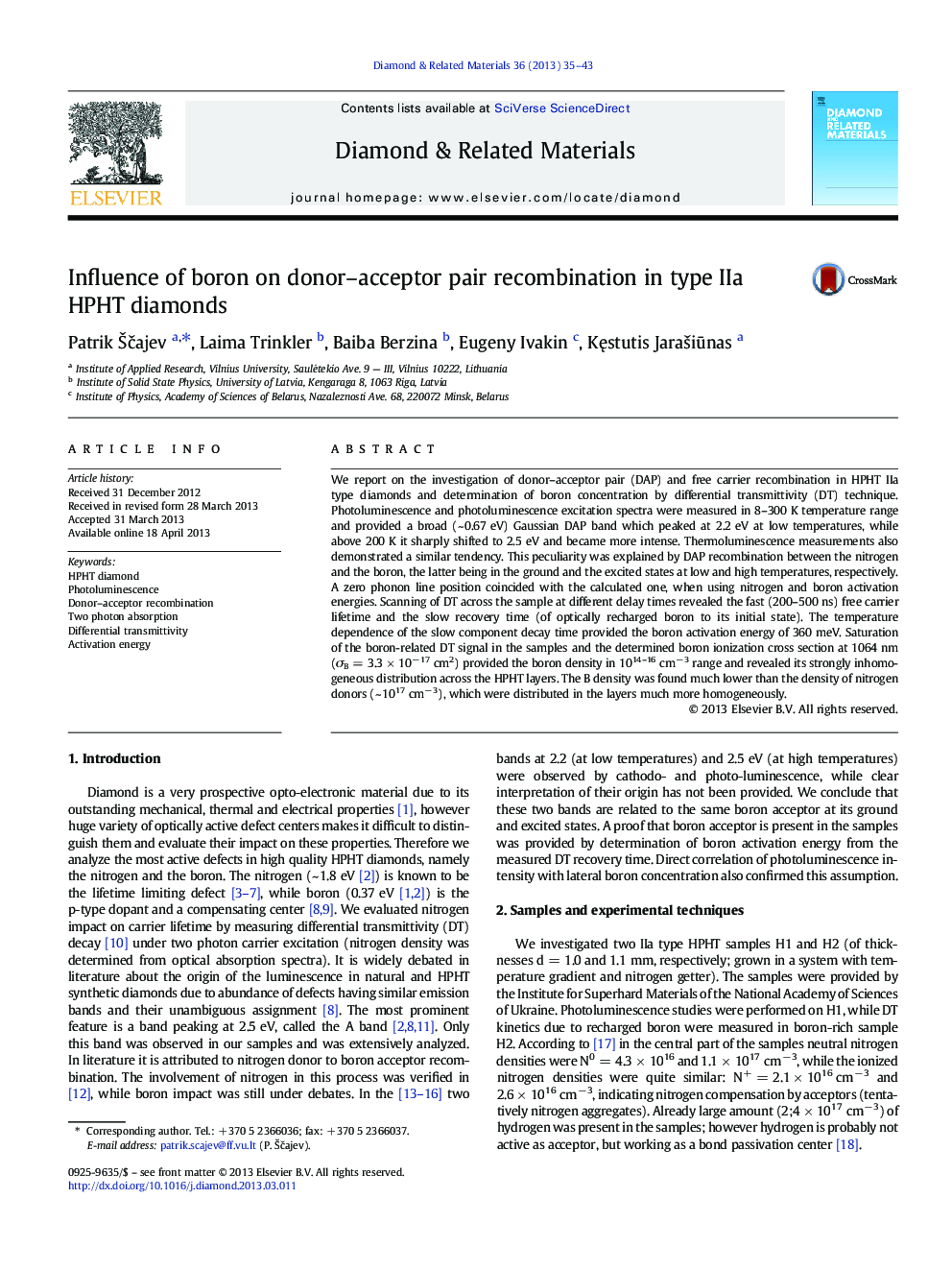| کد مقاله | کد نشریه | سال انتشار | مقاله انگلیسی | نسخه تمام متن |
|---|---|---|---|---|
| 701748 | 1460795 | 2013 | 9 صفحه PDF | دانلود رایگان |

• Nitrogen to boron DAP recombination PL peaks were explained.
• Fast free carrier and slow boron recharge DT components were observed.
• Fast component decay rate correlated with nitrogen density.
• Slow decay time temperature dependence provided activation energy of boron.
• The injection dependent slow DT signal amplitude provided boron concentration.
We report on the investigation of donor–acceptor pair (DAP) and free carrier recombination in HPHT IIa type diamonds and determination of boron concentration by differential transmittivity (DT) technique. Photoluminescence and photoluminescence excitation spectra were measured in 8–300 K temperature range and provided a broad (~ 0.67 eV) Gaussian DAP band which peaked at 2.2 eV at low temperatures, while above 200 K it sharply shifted to 2.5 eV and became more intense. Thermoluminescence measurements also demonstrated a similar tendency. This peculiarity was explained by DAP recombination between the nitrogen and the boron, the latter being in the ground and the excited states at low and high temperatures, respectively. A zero phonon line position coincided with the calculated one, when using nitrogen and boron activation energies. Scanning of DT across the sample at different delay times revealed the fast (200–500 ns) free carrier lifetime and the slow recovery time (of optically recharged boron to its initial state). The temperature dependence of the slow component decay time provided the boron activation energy of 360 meV. Saturation of the boron-related DT signal in the samples and the determined boron ionization cross section at 1064 nm (σB = 3.3 × 10− 17 cm2) provided the boron density in 1014–16 cm− 3 range and revealed its strongly inhomogeneous distribution across the HPHT layers. The B density was found much lower than the density of nitrogen donors (~ 1017 cm− 3), which were distributed in the layers much more homogeneously.
Journal: Diamond and Related Materials - Volume 36, June 2013, Pages 35–43